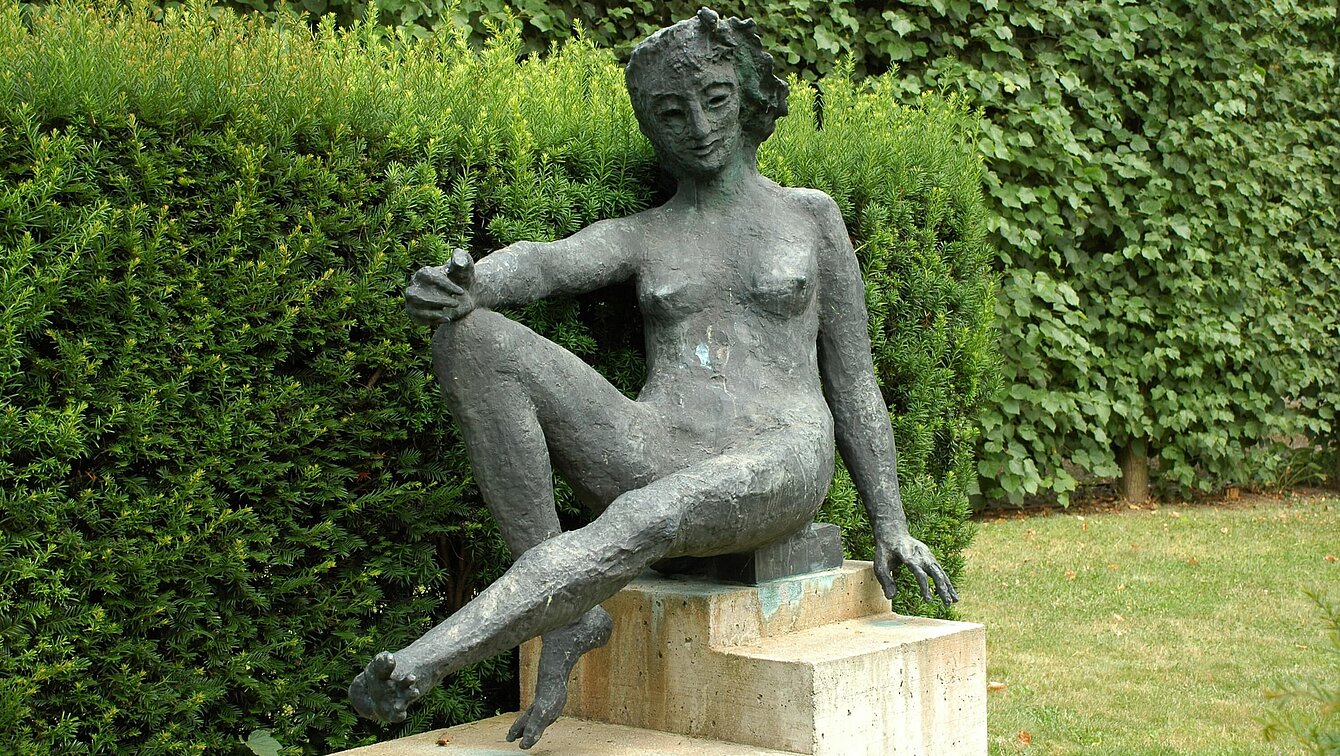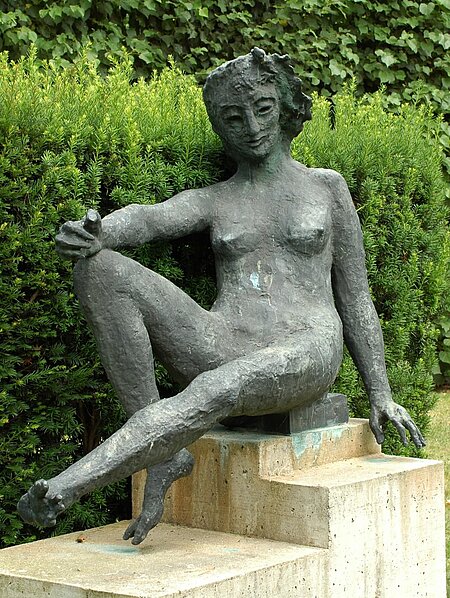Boeckl was primarily a painter and is regarded as one of the leading representatives of Austrian Expressionism. His bronze sculpture Atlantis, originally modelled in wax, is one of only two sculptures by him. It is in fact reminiscent of one of his sketches, in which a figure relaxes back against some cushions, although the sculpture lacks these supporting elements. Because of its reclining posture the figure seems to be precariously balanced, creating tension and uncertainty. If one compares this sculpture with the figures that appear in the Nazi art produced during the same period, Boeckl’s distance from that kind of dealisation becomes obvious.
Atlantis
Herbert Boeckl, 1940-1944


Image Credits
Author
Gudrun Danzer
Location on map
Position 1
Owner
Artothek des Bundes
Artist biography
Show all
About the sculpture
Herbert Boeckl was primarily a painter and is considered one of the protagonists of Austrian Expressionism. “Atlantis” is in fact one of only two sculptures known to be by Boeckl, the other being the bronze sculpture “Jumping Horse” from 1929. By the 1930s, Boeckl had already made a name for himself in the Austrian art scene. In 1935, he became a professor at the Academy of Fine Arts in Vienna, where he was in charge of the legendary “Abendakt”, the evening life drawing class, from 1938 onwards, and became an influential figure in the development of many of his students.
Boeckl’s interest in sculpture is also apparent in his paintings: in the early 1920s, Boeckl used colour like sculpting material, applying it onto the canvas directly from the tube, so that it developed its effect not only as a shade of colour, but also as a physically tangible substance. The female nude and its many variations form a central subject in Boeckl’s work, and one that he often painted in large formats. The plasticity and immediacy with which he conveys the physical presence of the female body in these pictures make them key works in 20th century Austrian painting.
For the bronze sculpture “Atlantis“ that he had originally moulded in wax, Boeckl orientated himself more on the compositional principles of painting than those of sculpturing. The posture of the figure is related to the “Seated Yellow Nude with Mask” from 1935, but while the painted nude is leaning back into the pillows in a relaxed manner, the sculpture lacks all supporting elements. Its reclining posture gives it a precarious balance, creating a sense of tension and insecurity. The rough surface with the light playing on it is also closely related to painting. The comparison of “Atlantis“ with the heroic sculptures of NS art that were created around the same time shows Boeckl’s distance to this kind of idealisation and his claim to an entirely different kind of reality.


















